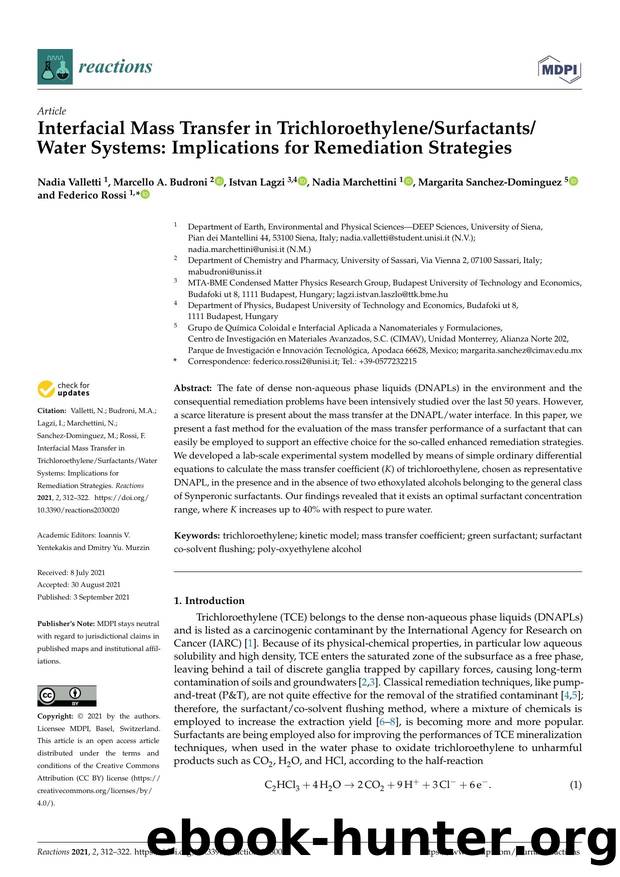Interfacial Mass Transfer in TrichloroethyleneSurfactants Water Systems: Implications for Remediation Strategies by unknow

Author:unknow
Format: pdf
Tags: The fate of dense non-aqueous phase liquids (DNAPLs) in the environment and the consequential remediation problems have been intensively studied over the last 50 years. However, a scarce literature is present about the mass transfer at the DNAPL/water interface. In this paper, we present a fast method for the evaluation of the mass transfer performance of a surfactant that can easily be employed to support an effective choice for the so-called enhanced remediation strategies. We developed a lab-scale experimental system modelled by means of simple ordinary differential equations to calculate the mass transfer coefficient (K) of trichloroethylene, chosen as representative DNAPL, in the presence and in the absence of two ethoxylated alcohols belonging to the general class of Synperonic surfactants. Our findings revealed that it exists an optimal surfactant concentration range, where K increases up to 40% with respect to pure water., trichloroethylene; kinetic model; mass transfer coefficient; green surfactant; surfactant co-solvent flushing; poly-oxyethylene alcohol
Download
This site does not store any files on its server. We only index and link to content provided by other sites. Please contact the content providers to delete copyright contents if any and email us, we'll remove relevant links or contents immediately.
Becoming Supernatural by Dr. Joe Dispenza(7118)
Tools of Titans by Timothy Ferriss(6964)
The Witchcraft of Salem Village by Shirley Jackson(6587)
Inner Engineering: A Yogi's Guide to Joy by Sadhguru(5910)
The Four Agreements by Don Miguel Ruiz(5530)
The Power of Now: A Guide to Spiritual Enlightenment by Eckhart Tolle(4767)
The Wisdom of Sundays by Oprah Winfrey(4632)
Room 212 by Kate Stewart(4113)
Fear by Osho(4094)
Pale Blue Dot by Carl Sagan(4017)
The David Icke Guide to the Global Conspiracy (and how to end it) by David Icke(3891)
Rising Strong by Brene Brown(3787)
Animal Frequency by Melissa Alvarez(3760)
How to Change Your Mind by Michael Pollan(3686)
Sigil Witchery by Laura Tempest Zakroff(3657)
Real Magic by Dean Radin PhD(3574)
Secrets of Antigravity Propulsion: Tesla, UFOs, and Classified Aerospace Technology by Ph.D. Paul A. Laviolette(3542)
The Art of Happiness by The Dalai Lama(3391)
Man and His Symbols by Carl Gustav Jung(3325)
